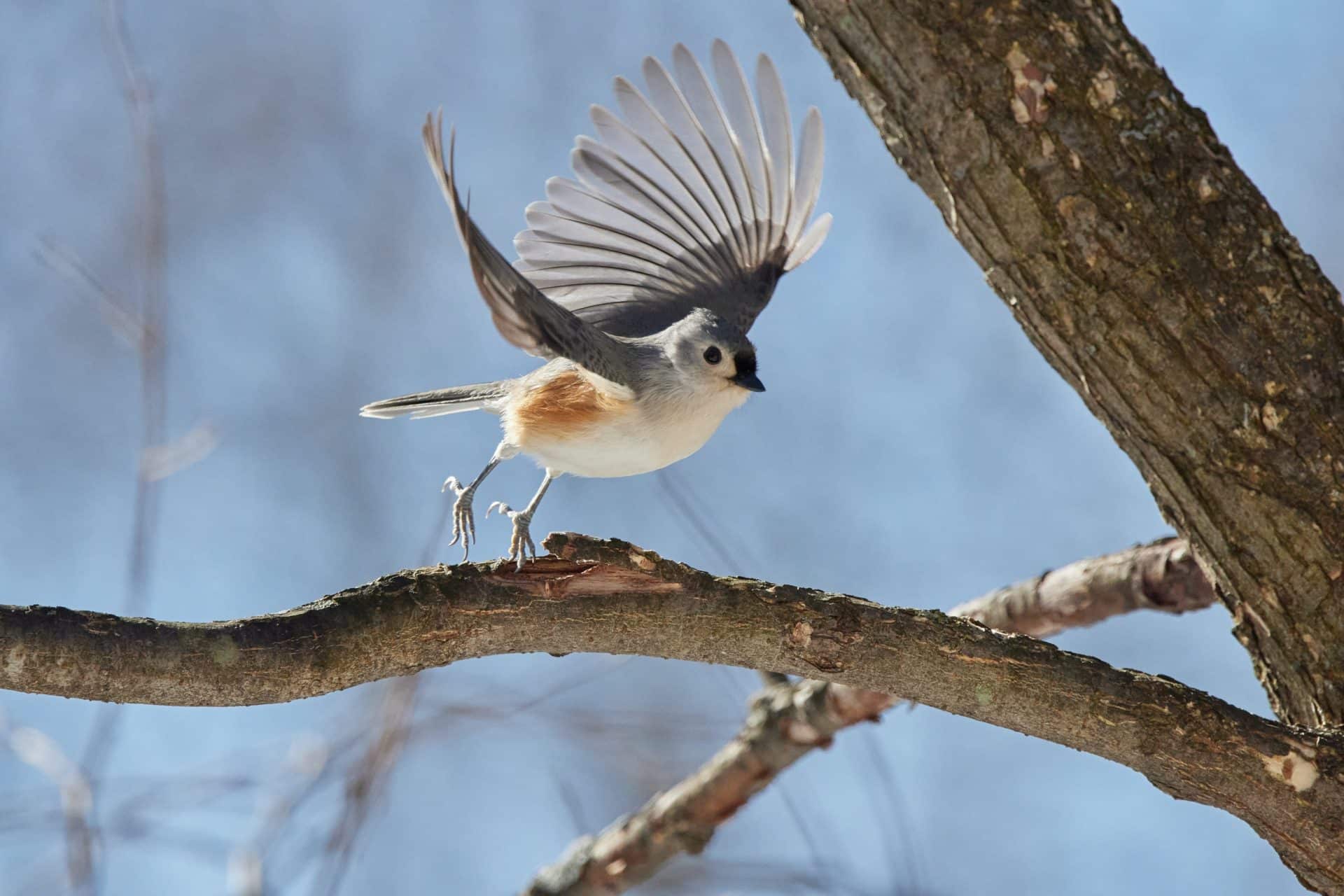Birds
Tufted Titmouse
Baeolophus bicolor

Voice: Song: Peter, Peter, Peter; Call: scratchy scolding tsee-day-day-day
Tufted Titmice are common in deciduous or mixed evergreen deciduous forests below 2,000 feet in elevation. They typically like areas with a dense canopy and a variety of tree species. However they can be found in parks, suburban areas and frequently visit backyard bird feeders.
Tufted titmice forage on the ground or in trees. They are acrobatic foragers, frequently seen hanging upside down to catch prey. Their primary warm weather diet includes caterpillars, beetles, ants, wasps, stink bugs, spiders and snails. They also supplement their diet with seeds, nuts and berries. In the winter tufted titmice are regular visitors to bird feeders in search of sunflower seeds, suet and peanuts.. Tufted titmice are hoarders. They store seeds, usually within 130 feet of the feeder, for later consumption.
Tufted titmice nest in trees cavities and nest boxes. Because they cannot excavate their own cavity, they use natural holes or cavities left by woodpeckers. They build a cup-shaped nest inside the cavity using dead leaves and moss and lined with soft material, including animal hair from raccoons, opossums, mice, woodchucks, squirrels, rabbits, livestock, pets, and even human hair.. Tufted titmice have even been observed plucking hair directly from living animals.
Tufted titmice are common in the eastern United States. They are dependent on dead wood for nesting. This is one reason why it’s important to allow dead trees to remain in forests rather than cutting them down. Tufted titmice populations have increased between 1966 and 2015, according to the North American Breeding Bird Survey. Their range has been expanding northward over the past half-century, possibly due to climate change, farmlands turning back to forests and the popularity of backyard bird feeders. Partners in Flight estimates a global tufted titmice breeding population of 8 million with 100 percent living in the United States.
Best Location to View: Any woodland area including the Woodland Trail and Woodland Walk
Color: Gray crested head and upperparts; black above the bill; white underparts; buffy-peach flanks
Range: Eastern US
Size: 5.5-6.5"
Wingspan: 8-10"



